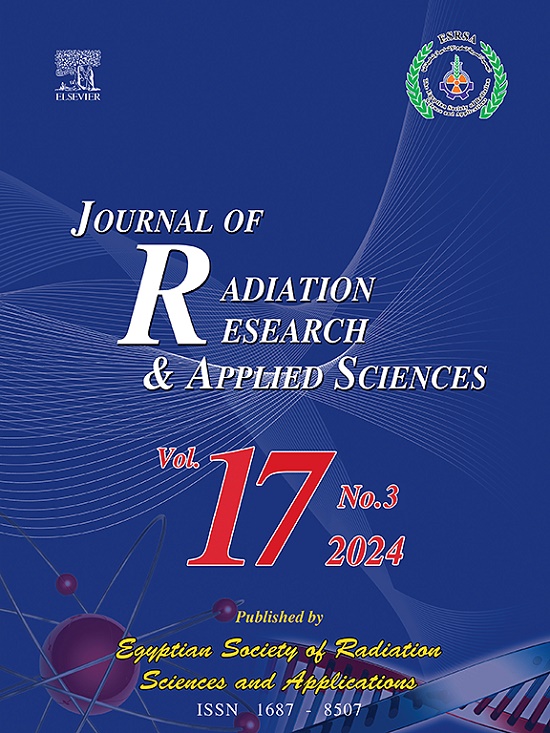利用与长度和半径相关的热导率研究 SWCNT 饱和混合基础流体的热性能:热辐射纳米流体研究
IF 1.7
4区 综合性期刊
Q2 MULTIDISCIPLINARY SCIENCES
Journal of Radiation Research and Applied Sciences
Pub Date : 2024-10-10
DOI:10.1016/j.jrras.2024.101133
引用次数: 0
摘要
碳纳米管是一种有趣的纳米材料,备受研究人员的关注。SWCNTs 的独特结构极大地改变了被 SWCNTs 饱和的流体的性能。3μm≤L≤70μm、10.0nm≤d≤40.0nm(其中 R=d2 为半径)的 SWCNTs TCM 增强了基础流体的导热性。因此,本次尝试的重点是[(C2H6O2-H2O) 50:50%]/SWCNT 在额外约束条件影响下的性能。设置通过球形表面进行考虑,特别强调太阳辐射效应。开发了纳米流体模型,对其进行了数值研究,并重点介绍了关键结果和综合讨论。研究发现,通过优化流体中的不稳定性(A=0.1,0.2,0.3,0.4),速度得到了提高,而 SWCNTs 浓度(j=0.01,0.02,0.03,0.04)由于相当大的粘性和密度效应而抵制了运动。当浓度达到 0.04 时,太阳辐射(Rd=0.1,0.2,0.3,0.4)下的热行为明显增加。这些因素有助于通过尽量减少 SWCNTs 的用量来获得所需的温度。旋转数越大,SF 越大,而热速率越大,流动越不稳定。本文章由计算机程序翻译,如有差异,请以英文原文为准。
Thermal performance of hybrid base fluid saturated by SWCNTs using length and radius dependent thermal conductivity: Investigation for thermal radiated nanofluid
The CNTs is an interesting nanomaterials which attained much attention of the researchers. The unique structure of SWCNTs highly alter the performance of fluids saturated by SWCNTs. The base fluid's thermal conductivity enhanced via SWCNTs TCM having and where is the radius. Hence, the current attempt focuses on the performance of [(C2H6O2-H2O) 50:50%]/SWCNTs under additional influences of the constraints. The setup is considered through spherical surface with special emphasize on the solar radiation effects. The model nanofluid model developed, investigated numerically and spotlight the key results with comprehensive discussion. It is examined that the velocity increased by optimizing the unsteadiness () in the fluid while the SWCNTs concentration () resist the motion due to considerable viscous and density effects. The significant increase in the thermal behavior is observed for solar radiations () when the concentration is taken up to . These factors would help to acquire the desired temperature by minimizing the SWCNTs amount. The SF enlarges for larger rotational number while rate of thermal rate augmented for more unsteady flow.
求助全文
通过发布文献求助,成功后即可免费获取论文全文。
去求助
来源期刊

Journal of Radiation Research and Applied Sciences
MULTIDISCIPLINARY SCIENCES-
自引率
5.90%
发文量
130
审稿时长
16 weeks
期刊介绍:
Journal of Radiation Research and Applied Sciences provides a high quality medium for the publication of substantial, original and scientific and technological papers on the development and applications of nuclear, radiation and isotopes in biology, medicine, drugs, biochemistry, microbiology, agriculture, entomology, food technology, chemistry, physics, solid states, engineering, environmental and applied sciences.
 求助内容:
求助内容: 应助结果提醒方式:
应助结果提醒方式:


